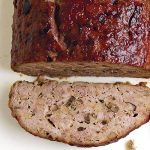The Dirty Secrets and Deep Flavor of Black Garlic
We have not been able to define the origins of black garlic. Rumor has it that it is a traditional Korean product. It is said to have been fermented in clay pots in the summer sun. Other sources have traced its history back to places such as ancient China, Japan, and Egypt. And, recently, Scott Kim, a Korean inventor, claims he developed black garlic in 2004 as the “next big superfood”.
Kim created Black Garlic Inc, and since then it has become a staple in professional kitchens around America. While it’s origins are unknown, one thing remains certain: all chefs love black garlic for its deep, layer flavor that lingers on your taste buds. But, how does garlic transform into black garlic? The main difference between garlic and black garlic is the enzymatic breakdown that takes place. This enzymatic breakdown takes over the course of six weeks, where sugars are being converted and the garlic is turning black. Think of black garlic as a strongly caramelized garlic, not fermented garlic.
There are many applications for garlic. Many chefs have been utilizing the flavor to increase the level of umami on dishes that needed a more exciting flavor profile. Black Garlic has even been used in desserts! Think of Pastry Chef Katy Peetz’s fennel-black garlic gelato. Whatever your use for this product might be, it is time for you to bring your dinner to a new level with the addition of black garlic.
_____
Black garlic has a few dirty secrets. It may or may not be a traditional Korean product, originally “fermented” in clay pots in the warm summer sun, or according to sketchy internet sources, it may have hailed from ancient China, Japan, or even Egypt. Less likely but better documented, Korean inventor Scott Kim claims to have developed black garlic in 2004 as the next big superfood.

Photo Credit: StarChefs.com
What we do know is that black garlic has become a staple in professional American kitchens since Kim formed Black Garlic Inc. and began selling the product to stateside chefs in 2008. Regardless of its provenance, chefs know why they love black garlic. “It’s deep. The flavors are so layered, and they linger,” says Chef Evan Hanczor of Brooklyn’s Parish Hall. “It has notes of dark caramel, chocolate, a little bitterness, a little sweetness, and umami, plus thatje ne sais quoi.”
That je ne sais quoi has long been associated with all things fermented, a trend that’s picked up momentum in fine-dining kitchens over the last few years. But black garlic owes its characteristic flavor not to fermentation, but enzymatic breakdown and the good old fashioned Maillard reaction. Processed at around 60°C/140°F for a month to six weeks, it essentially gets a low and slow roast that converts sugar and turns the cloves black. Sorry to disappoint you lovers of funk and rot, but black garlic is glorified, pasteurized, deeply caramelized garlic.
Read more here.














